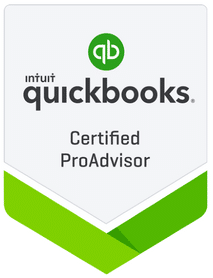- Patrick Roney
- (877) 503-8607
Follow Us :
Follow Us :
Proledge
April 16, 2010

In a previous posting, we discussed the various options for streamlining your accounts payable process. The idea is to try to avoid having to use the full accounts payable feature in QuickBooks or other apps in order to save time. However, this works only if you have very few bills and if you have the time to do it yourself. If you business is such that you need help from a bookkeeper with accounts payable, cutting corners doesn’t work and you need a more rigorous process. QuickBooks is a fantastic tool for that, but there are other options for Accounts Payable such as Bill.com. In this post, we’ll focus on QuickBooks. We’ll address other options in future posts.
Before we jump into the details, note that we use the term “bill” for the document you receive from a vendor. Many people call it “invoice”, but we’re trying to stick to the QuickBooks nomenclature that assumes that an invoice is the document that you send to your clients and a bill is the document you receive from a vendor. From the vendor’s perspective, the document he sent to you is an invoice, so his invoice is your bill. It’s semantic, but QuickBooks does a good a job at being consistent and we try to stick to this terminology as well.
So, let’s assume that you’ve hired a bookkeeper or a firm like ProLedge to help you with bookkeeping, and among other tasks, you need this bookkeeper to help you with Accounts Payable. How would make this work?
You first need to break down the process into multiple steps and decide who will responsible for each of the steps. Here’s a typical process:
If you implement the process correctly, the bookkeeper will save 90% of your time spent on accounts payable. 100% is unfortunately not possible, because, for security reasons, the business owner or decision maker has to stay involved with a couple of the steps.


Fill out the form below to sign up to our Blog Newsletter and we’ll drop you a line when new articles come up.
Bookkeepers.
Professional. Affordable.
ProLedge is a bookkeeping services firm.
Copyright © 2024 All rights reserved.
Hello. Can we help you?